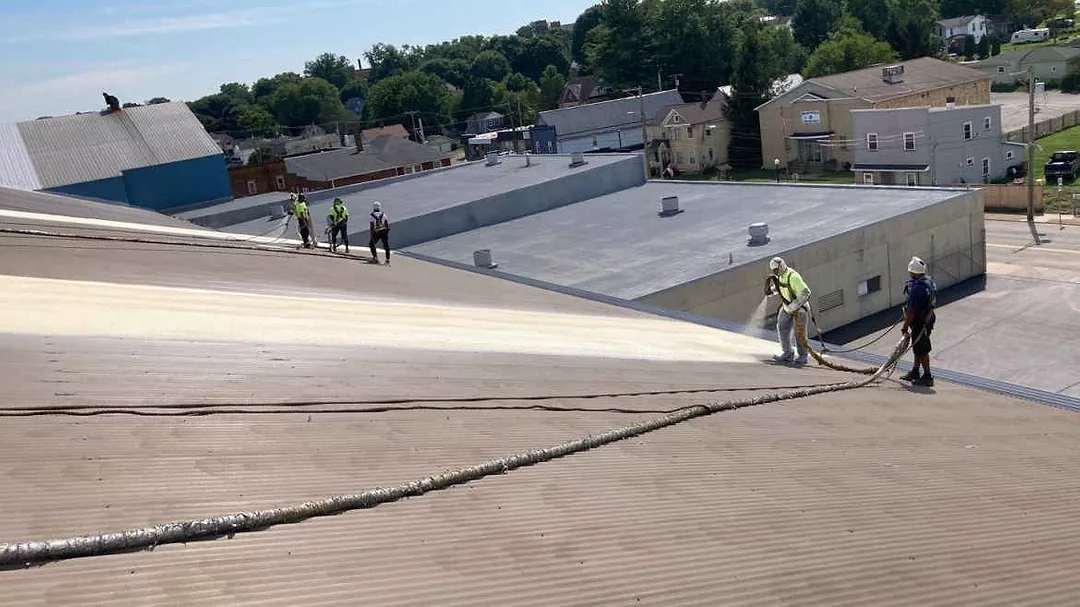Roofing Industry Q&A
Spray Foam on the Rise
RC Catches up with SPFA Executive Director Rick Duncan to gauge the state of spray foam roofing.


A rollercoaster 2022 highlighted by supply chain challenges, rising inflation and a broadening workforce shortage in roofing labor has many looking forward to finding some stability this year. Roofing Contractor recently caught up with Rick Duncan, executive director of the Spray Polyurethane Foam Alliance, to help gauge the pulse of its membership, and the industry in 2023.
RC: How would you characterize the state of the roofing industry in 2023?
RD: From a spray foam standpoint, the roofing industry remains stable. Our sector hasn’t had significant growth over the past few years, but demand for spray foam roofing is consistent and unwavering.
RC: How has the post-pandemic economy been good for SPFA members and this segment of the roofing industry?
RD: For SPFA members, the post-pandemic economy has been strong, specifically in insulation. More people worked from home during the pandemic and have continued to [work from home] post-lockdowns. A lot of these folks made improvements to their homes in the form of additions, the creation of home offices, etc. This trend, coupled with higher interest rates, have kept people in their homes longer and increased demand for SPF insulation.
On the commercial roofing side, which is where the majority of spray foam roofing is concentrated, we haven’t seen as much growth post-pandemic. Construction has slowed in many commercial real estate sectors, with the exception industrial and warehouse facilities. This particular sector has been strong, spurred by the greater number of people shopping online, a trend only strengthened by the pandemic. However, we do believe that with the passing of the Inflation Reduction Act, which provides significant tax incentives to building owners for making their facilities more energy efficient, we may see a spike in roofing retrofits this year and beyond.
RC: Is supply chain or availability of raw materials still a concern among members?
RD: Not as much. The consensus among our members was that a lot of the supply chain and materials issues would be alleviated during 2022 and that does, in fact, seem to be the case. We aren’t hearing as much about this anymore.
RC: How has SPFA helped contractors endure or even thrive?
RD: Coming out of the pandemic, the SPFA has identified meaningful opportunities surrounding the Inflation Reduction Act [IRA] for our member contractors, creating a suite of educational resources and webinars on the topic. Specifically, the IRA’s 179D [provision] is notable for spray foam roofing contractors. The tax deduction can be claimed by commercial building owners that install qualifying energy efficiency measures, including envelope improvements and roofing. This represents an opportunity for spray foam roofing contractors who know about it and can educate customers on the deductions available with spray foam roofing, essentially using this as a business development tool.
Aside from the IRA education we have provided, the SPFA has also worked diligently to improve our member benefits. We recently partnered with Health Cooperative Strategies and World Insurance to introduce a members-only Health Care Plan that gives members access to an insurance option at an affordable rate of between 10% to 30% less than what they are likely paying for existing coverage. Additionally, we set up a Build Central discount program for our contractors, allowing them to participate in a lead-sourcing program. The program [allows them] to locate all commercial construction and renovation projects in their territory and to get in touch directly with architects and general contractors to bid for the work.
RC: Our survey data showed continued optimism as sales projections for the next few years trended positively in the residential and commercial sectors. Does that surprise you? Why or why not?
RD: [It] does not surprise me. There is an emphasis today on making buildings energy efficient. Obviously, climate change and the destruction it causes is a core driver of that. Another key driver is the Inflation Reduction Act, which provides tax credit, incentive and rebate programs for commercial and residential properties made to be more efficient. Additionally, there is a general push to move away from fossil fuel energy sources and toward renewable options, such as solar power, instead. The first thing to do when applying solar is to make the building energy efficient and the roof is one key place to do that. With all of these factors combined, it is unsurprising that sales projects are strong.
RC: As we discussed in previous years, the popularity of coatings, sprayfoam and metal roofing increased in our survey. Can you add any insight to the growth in any of these categories?
RD: Metal roofing is likely surging in popularity because it is a great replacement to asphalt shingles. However, from the SPFA’s perspective, metal roofing does not really compete with spray foam as we don’t participate in sloped roofs. In terms of spray foam itself, the material’s popularity and sales projections in roofing applications are increasing because of its durability, performance, and the energy efficiency programs and tax credits starting in 2023.
SPF popularity has also been driven in the shorter term by other roofing insulations that are still impacted by supply chain issues. One example is the continued supply challenges with poly ISO. Spray foam is a great alternative and our members have indicated they are getting more roofing jobs due to this one product shortage.
In terms of roof coatings, they provide a means for refreshing and renewing existing roofs at a lower cost than a total reroof. Thus, in times like these, when there is economic uncertainty, it’s likely that many building owners will turn to coatings to keep their roofs performing at an affordable cost.
RC: What other trends are you watching in 2023?
RD: We are watching the impacts of higher energy costs. We believe that, combined with the benefits of the Inflation Reduction Act, these two should call for a positive year for SPF roofing and insulation.
RC: What are you proudest of the organization having come through the challenges of 2022?
RD: We did experience some challenges in being unable to host the 2021 SprayFoam Convention & Expo. However, we came back strong with a highly successful 2022 show. In terms of our industry at-large, we are proud of the fact we were able to get beyond the challenges with materials shortages. The vast majority of our member contractors survived that and we are very happy about that.
Looking for a reprint of this article?
From high-res PDFs to custom plaques, order your copy today!







